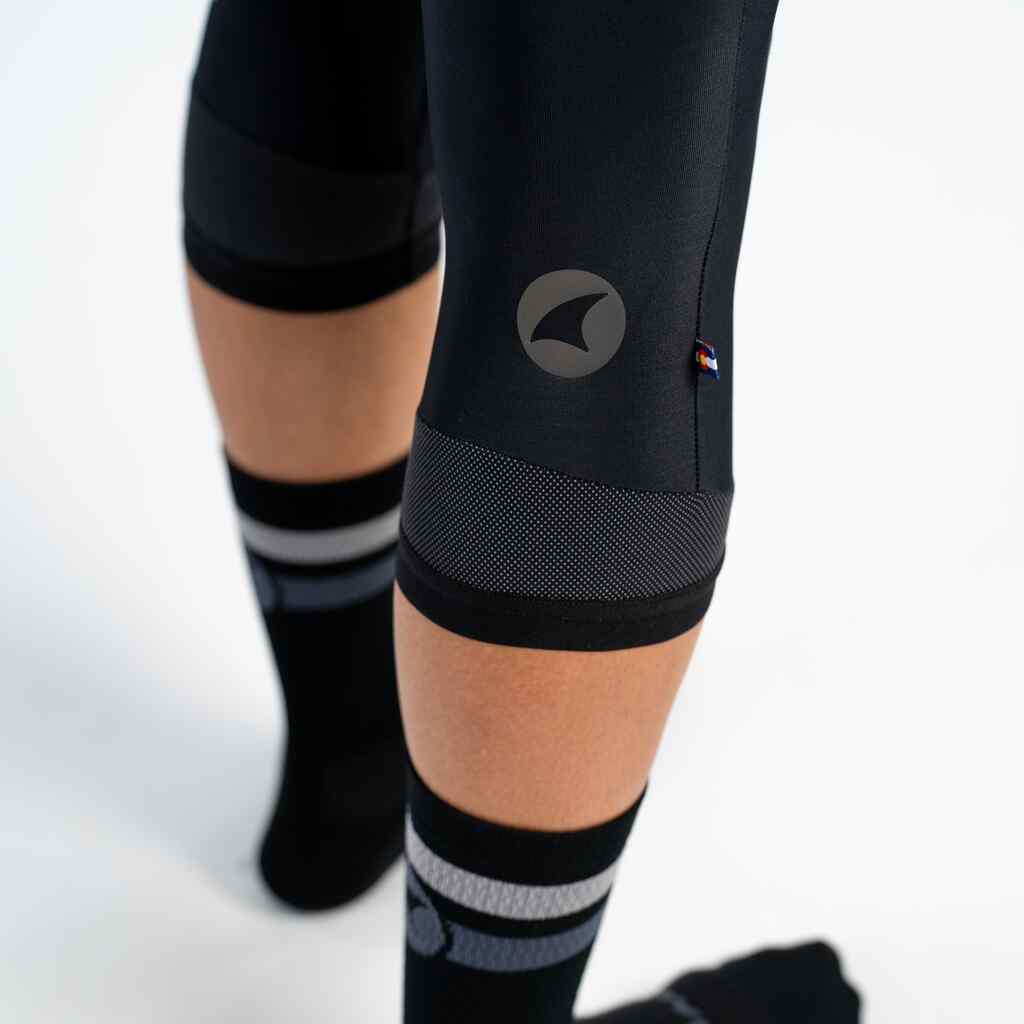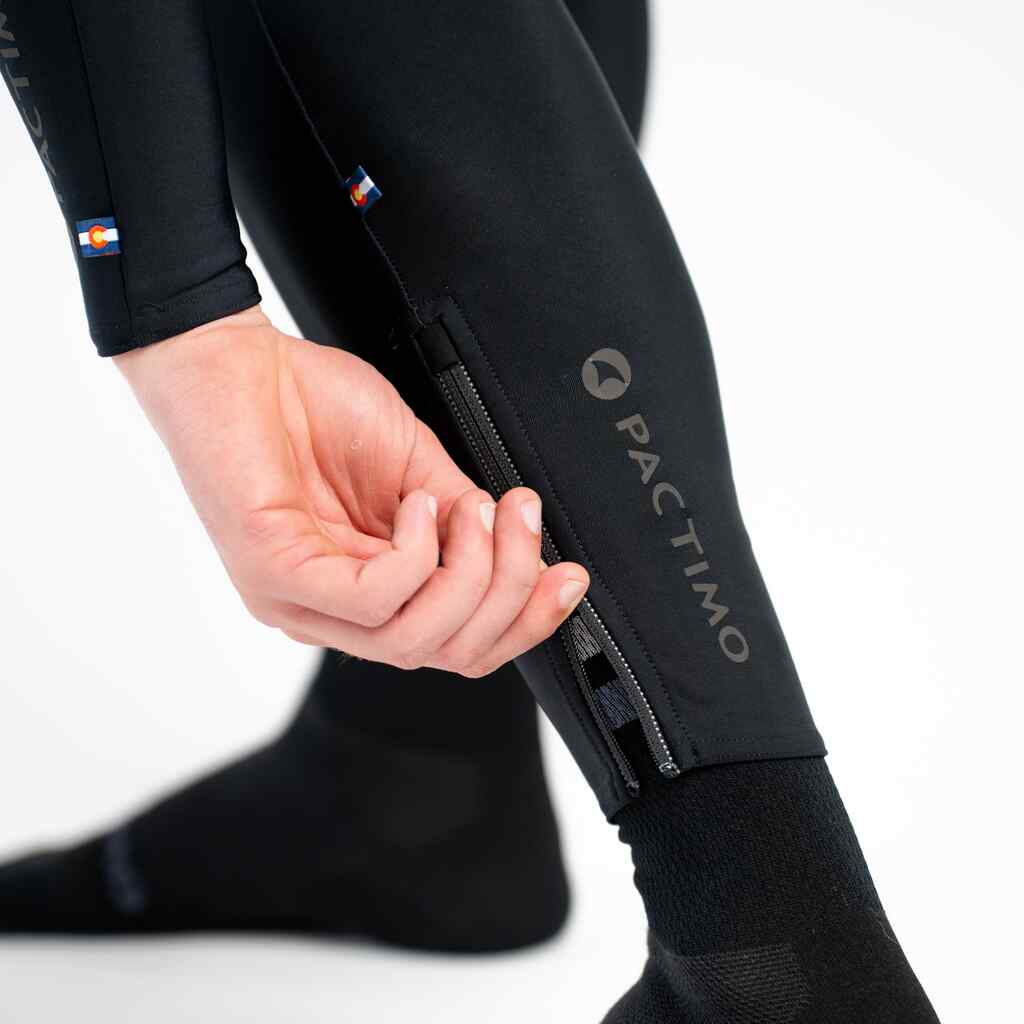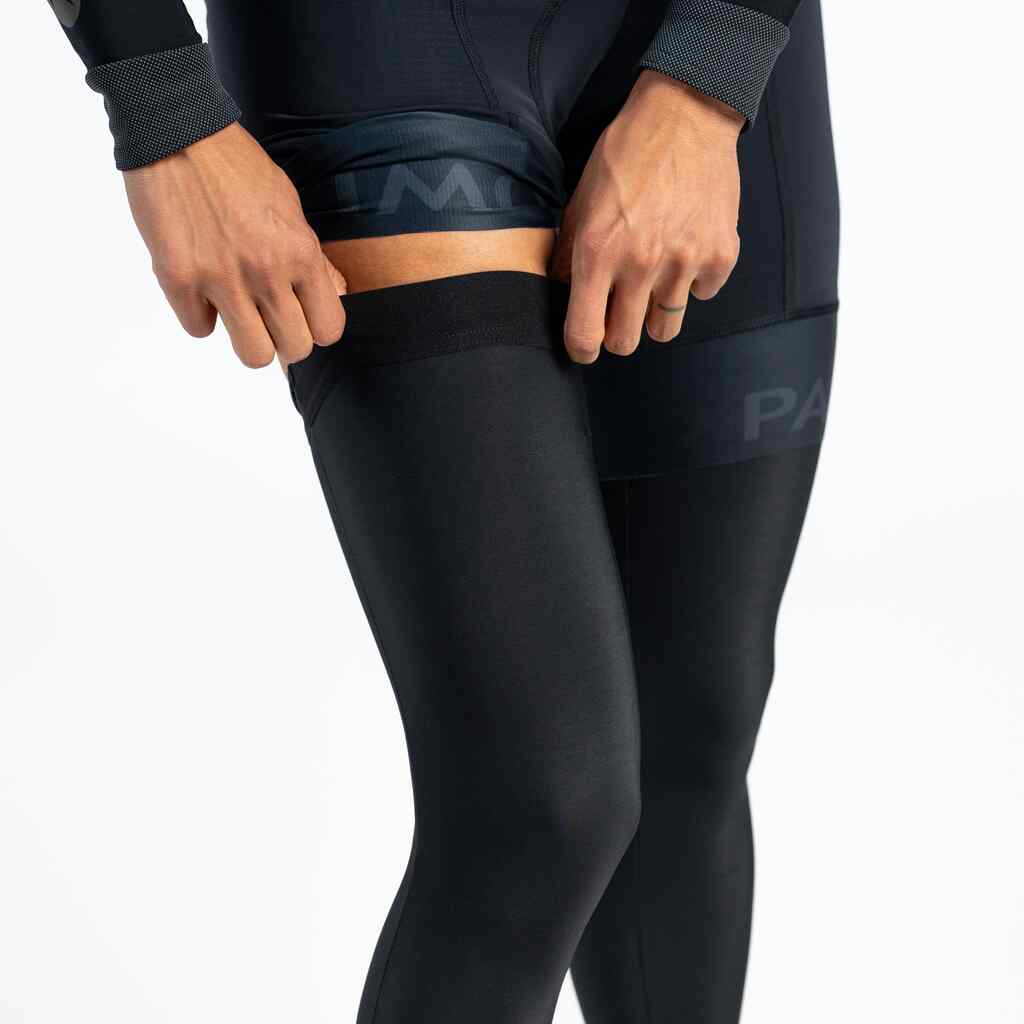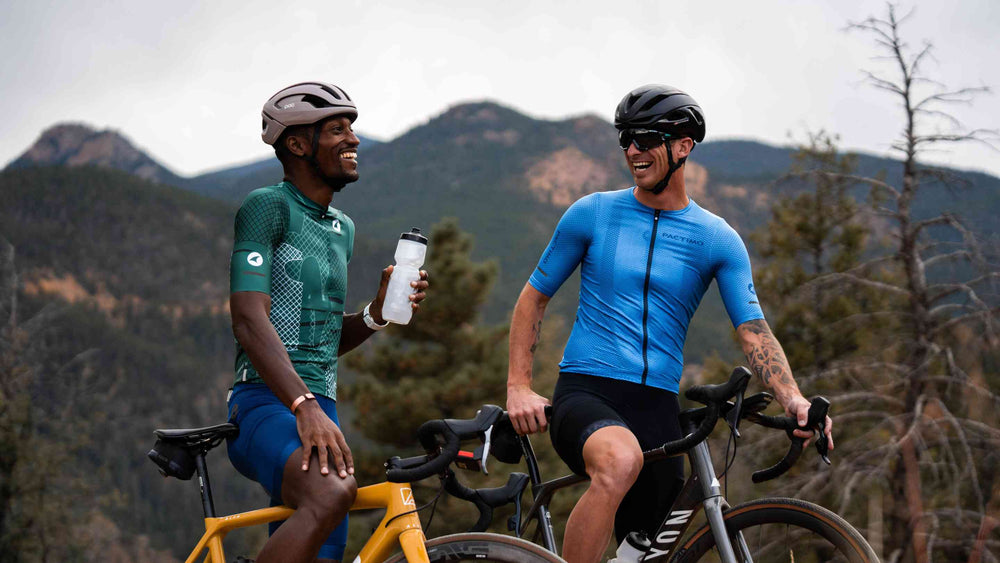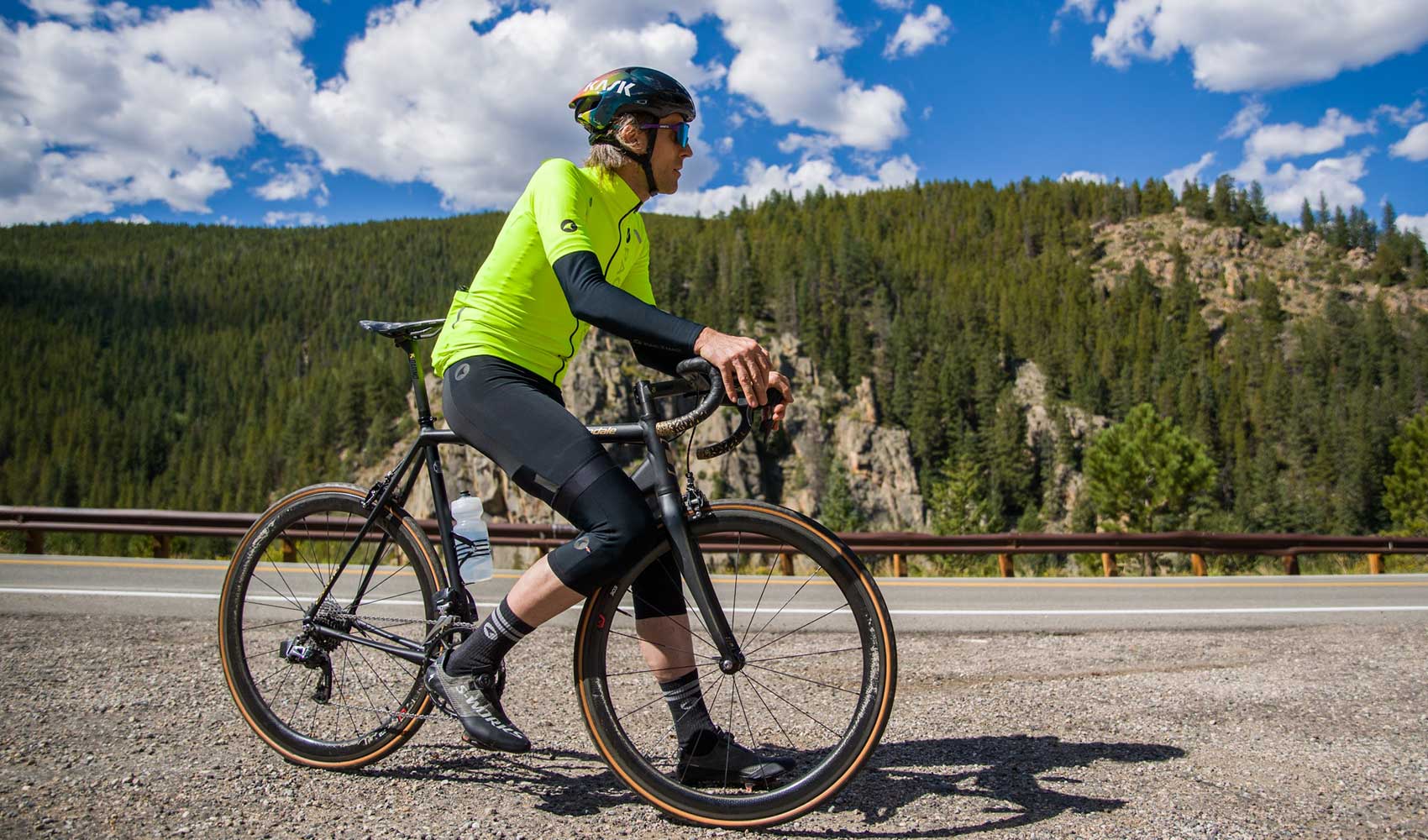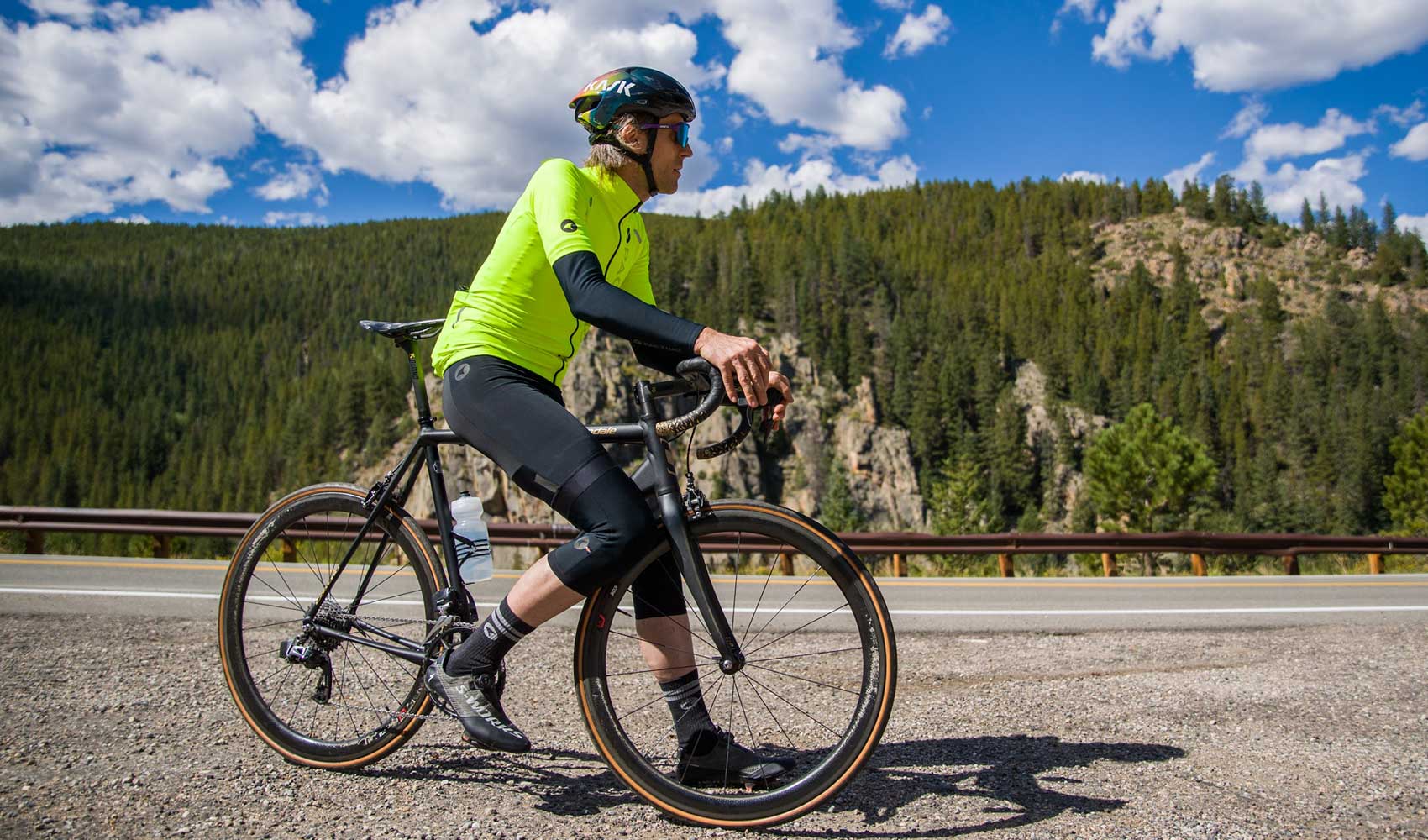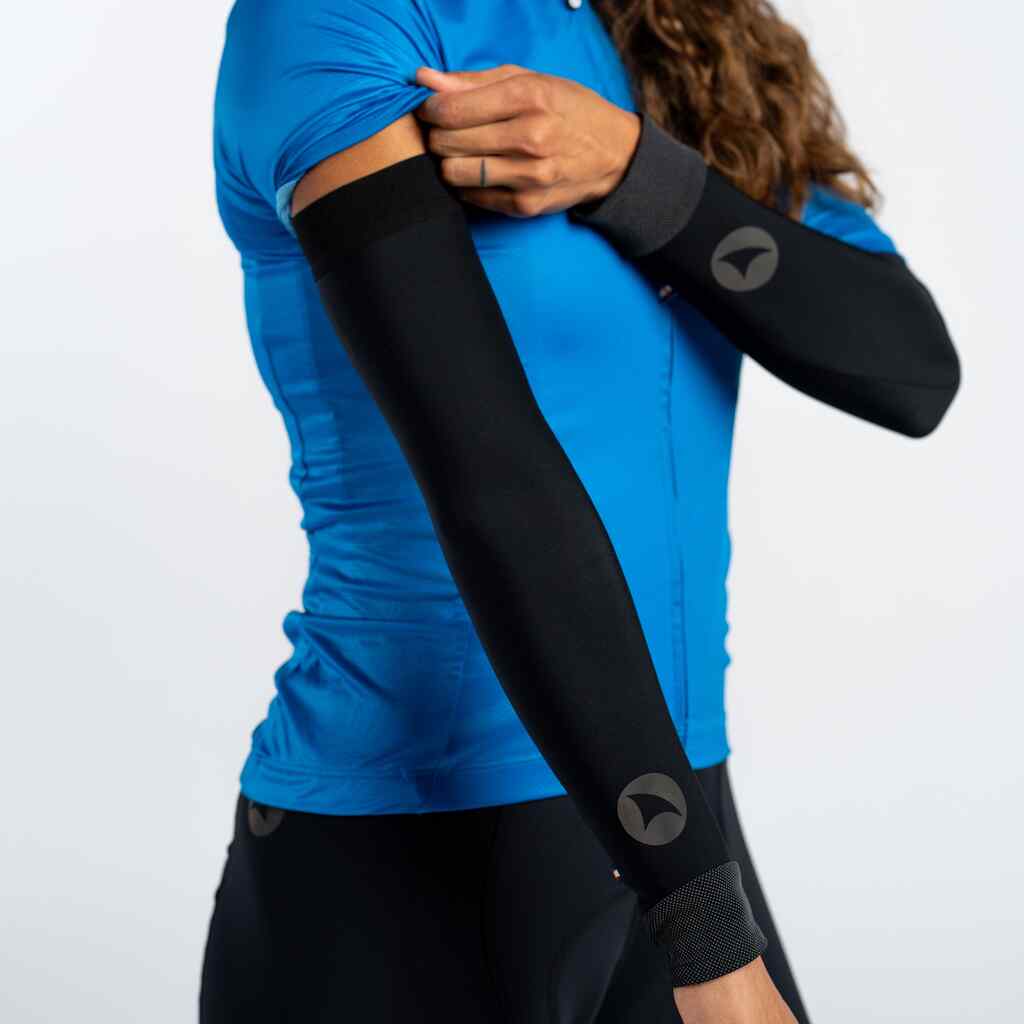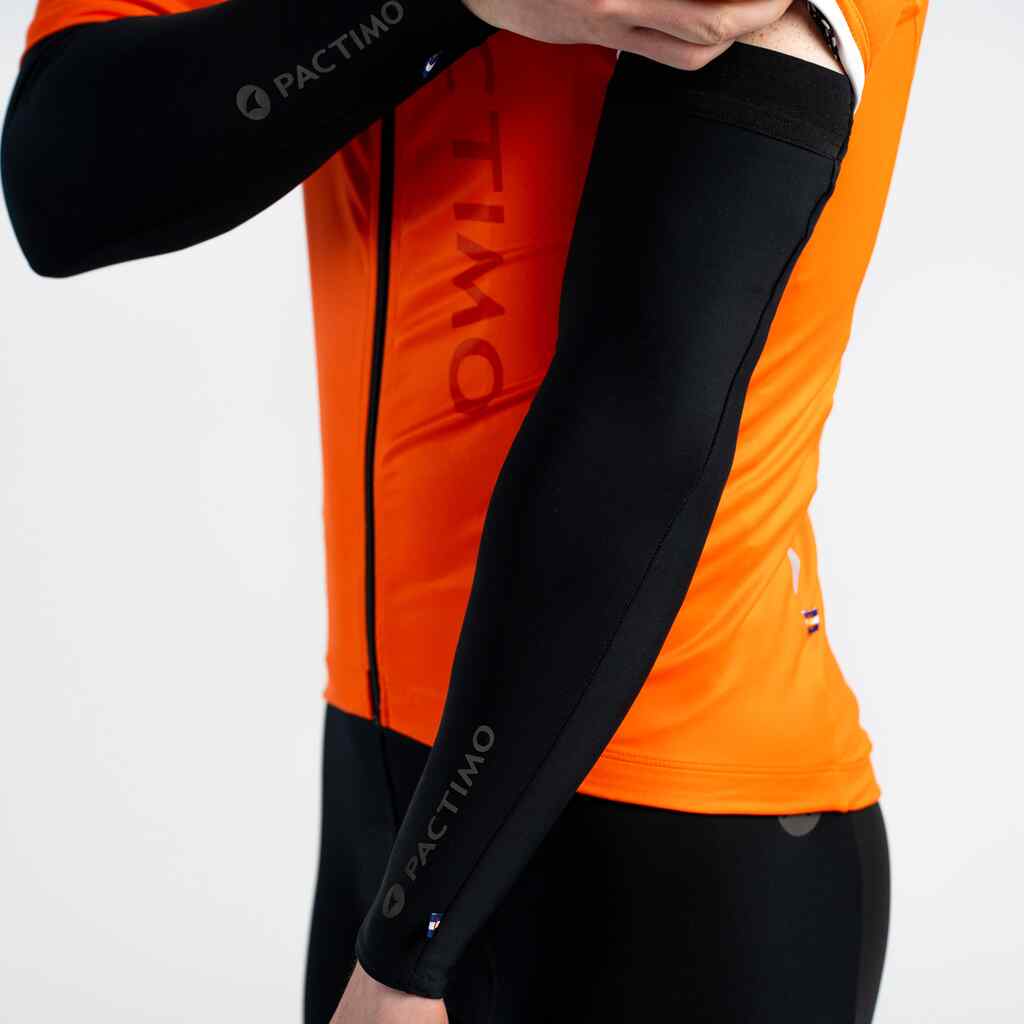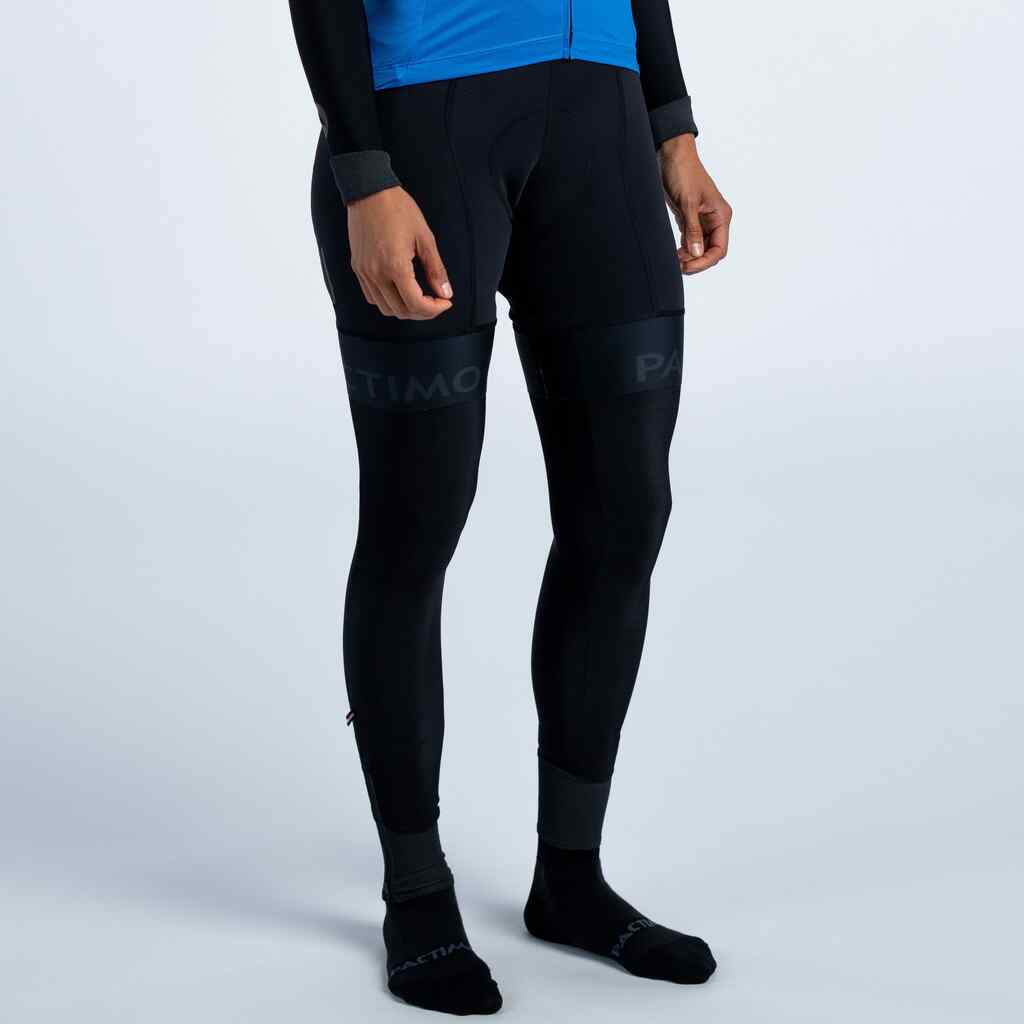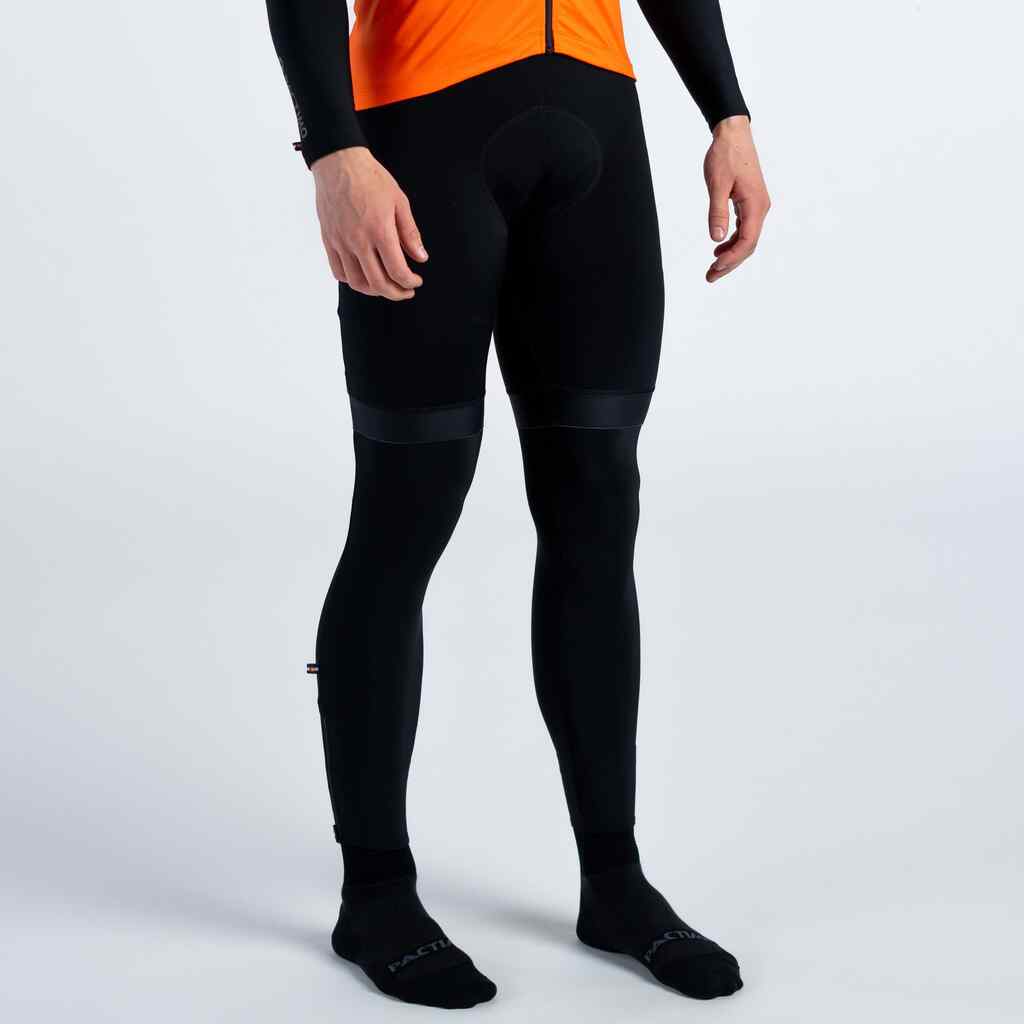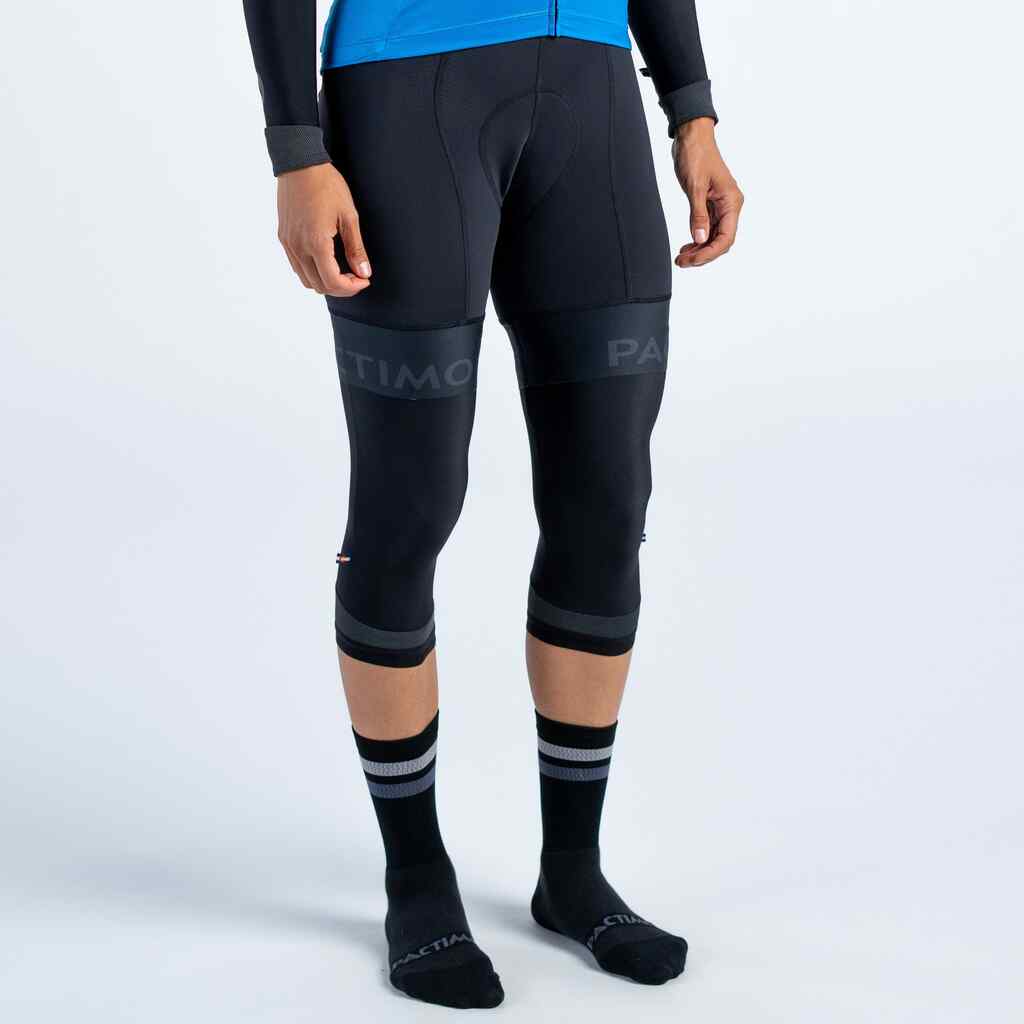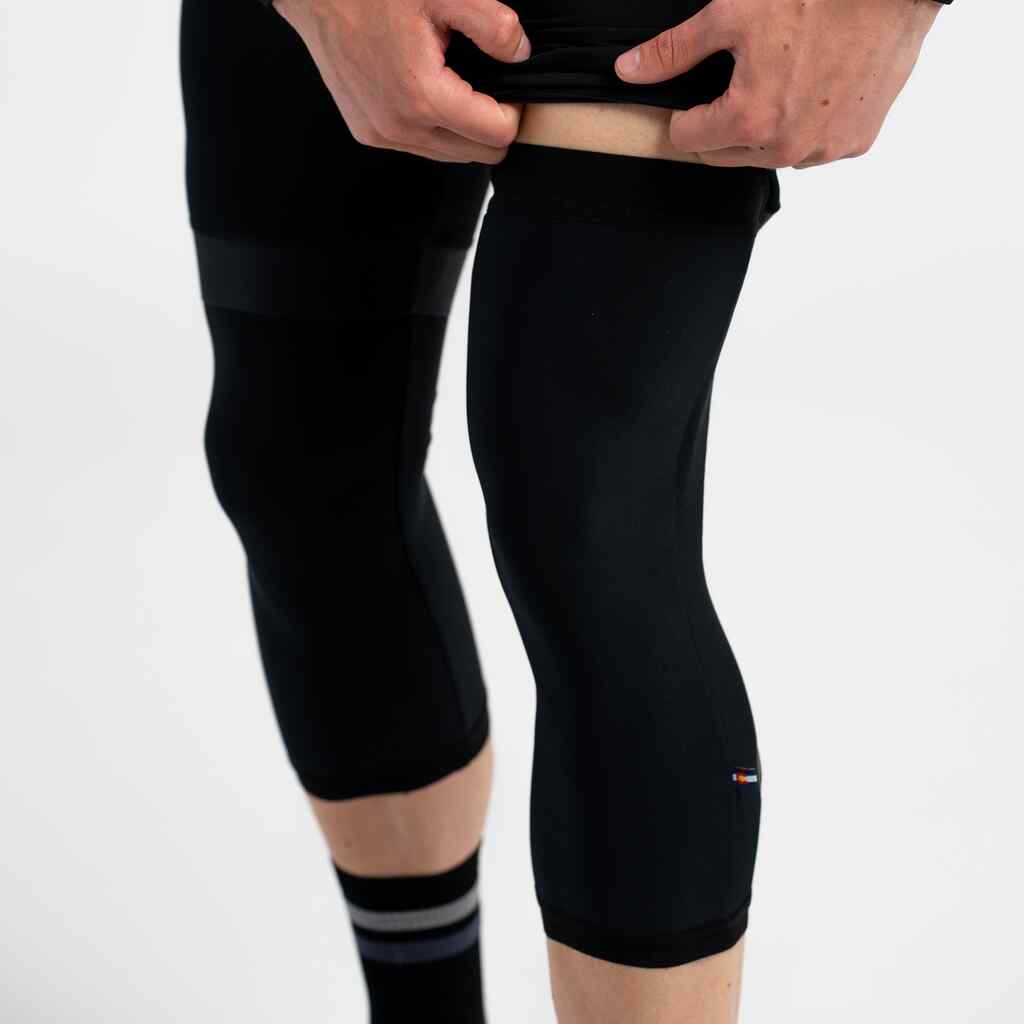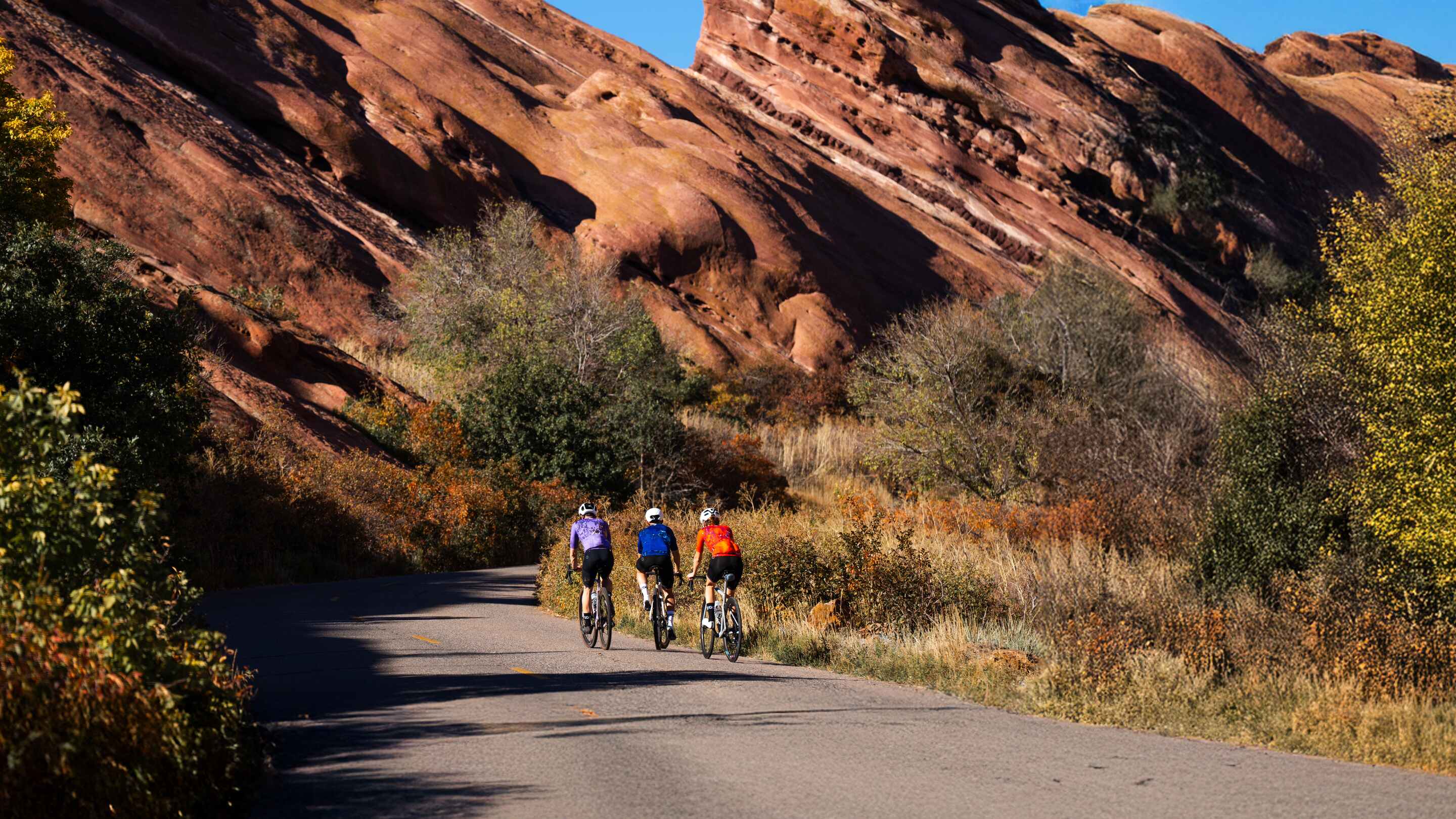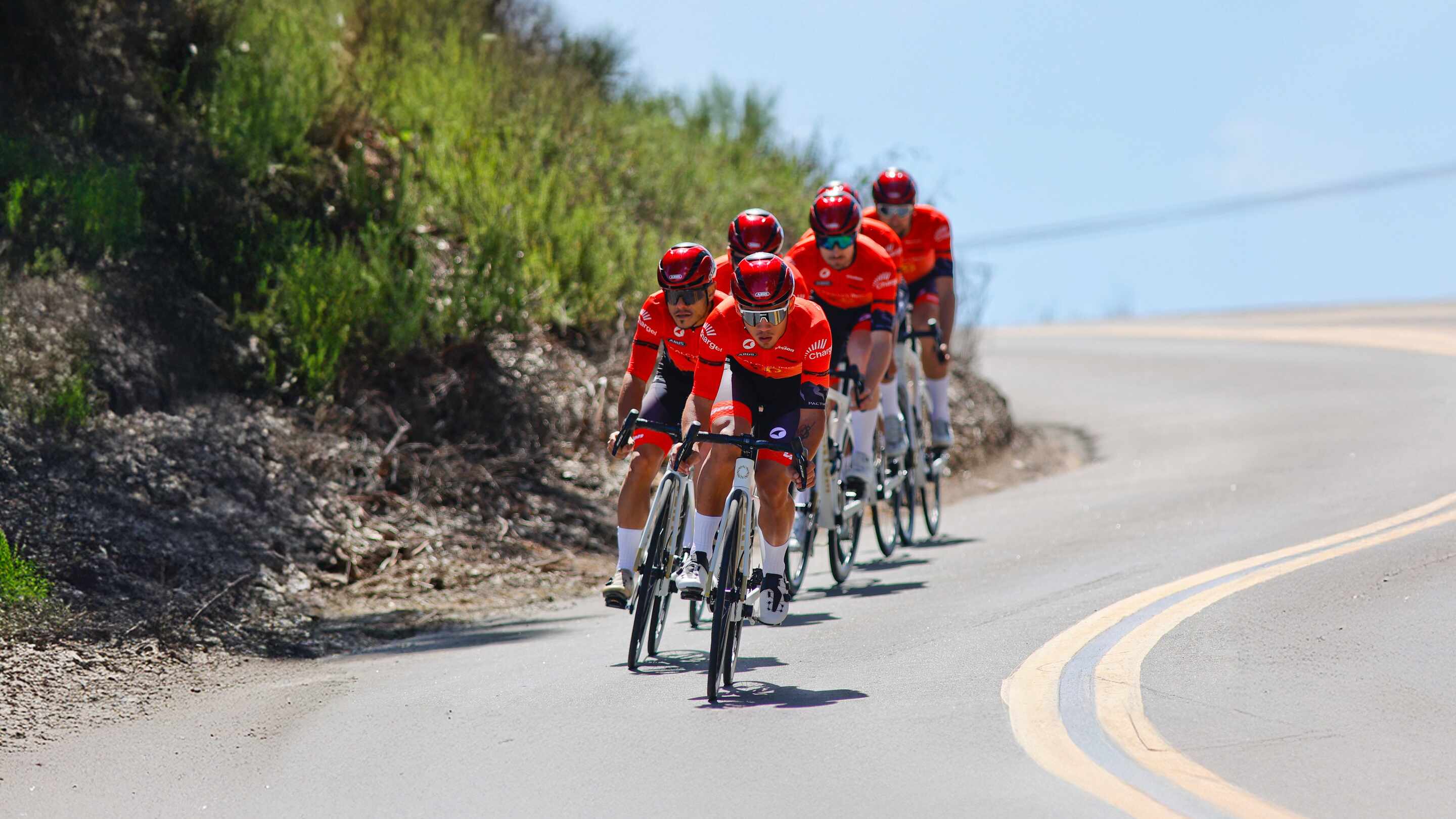The start of shoulder season signals a completely different cycling.
Not only is the weather less predictable, but the temperature difference from morning to evening might make it seem as if you need two completely different cycling wardrobes. This is especially challenging if you are commuting to and from work or taking long rides that start early in the cool morning air.
The simple solution is arm, leg, and knee warmers.
What are warmers?
Warmers are a great choice for any cyclist because they are compact and lightweight, making them easy to pack and carry, while also being extremely effective against chill. They are generally made of Lycra, and in some case may include a fleece backing (see more about fabrics below), and are meant to be worn over your arms or legs to keep your extremities warm and dry while riding in chilly conditions.
Cycling Arm Warmers are designed to be used in concert with a short sleeve jersey and provide coverage from the wrist all the way up to just below the shoulder. The sleeve of the jersey should be worn over the warmer to help hold it in place. Good quality arm warmers will include Silicone grippers at the upper arm opening to also provide stability and prevent slippage.
Cycling Leg Warmers are to be used with cycling shorts or bibs and go from the ankle all the way up to the mid-point on the thigh. The leg of the bibs or shorts should be worn over the top of the leg warmer to help hold it in place. Good quality leg warmers will include Silicone grippers at the upper leg opening to also provide stability and prevent slippage, and zippers at the ankle to ease putting on and removing.
Cycling Knee Warmers are just like leg warmers but stop just below the knee rather than at the ankle. The leg band of your shorts or bibs should be worn over the top of the knee warmer to help hold it in place.
Why use warmers?
If warmers provide the same coverage as a long sleeve jersey and a pair of tights why not just opt for the jersey and tights?
The simple answer to that is versatility.
Arm and leg warmers allow riders to quickly adjust to changing weather conditions or temperatures encountered in spring or fall. They are also the perfect choice for mountainous rides, where temperature variances from base to summit could be as much as 30 degrees. They’re easy to put on or take off as conditions change allowing you to moderate your body temperature during your ride. With practice you can even remove and stow arm warmers without even stopping.
Plus, warmers are not just for roadies. Commuters can easily stash them in panniers or backpacks for the afternoon, and warmer, ride home. And, since they are baggy short compatible, mountain bikers can utilize them too.
What should you look for when buying warmers?
There is a vast selection of warmers available on the market, with variances in quality and price. Here’s a few tips to consider when buying warmers:
Fabric - While a great deal of warmers are constructed with Lycra, better quality ones will be designed utilizing Spandex and thermal fleece so they are stretchy, breathable and weather resistant. Warmers with Italian Milano fleece are especially nice since they are extremely effective at wicking sweat and moisture away from the body while also keeping you warm.
Design - Inexpensive warmers may be little more than cloth tubes for your extremities. Higher quality warmers include design technologies such as articulation and ergonomic arm and leg openings. These better-designed versions provide a snug, contoured fit and will be extremely comfortable on long rides. Look for warmers with anatomically placed seams as they are less likely to chafe or become uncomfortable over time and provide a muscle-stimulating compression fit.
Reflective Components - If possible, choose warmers that include reflective strips, decals or details. Since warmers are typically black, these extra elements will make a big difference when it comes to safety when riding at night or low visibility weather conditions.
Grippers - Upper arm and leg grippers help hold the warmers in place. They can be elastic, rubber or Silicone. Silicone is normally the best option as it is very comfortable against the skin and is the least likely to cause a rash or pinch the skin.
Zippers - You’ll definitely want your leg warmers to include zippers at the ankles, or you might feel like you’re in a wrestling match when putting them on or taking them off. Especially if doing so while wearing shoes.
Sizing - Make sure to choose sizes that are similar to your shorts or jersey. If the warmers are unisex, women may need to size down from their jersey size. And, don’t forget, warmers are meant to fit snug so they don’t flap in the wind.
